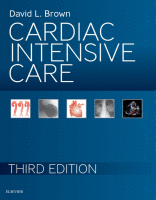Physical Address
304 North Cardinal St.
Dorchester Center, MA 02124

Atrial Fibrillation 2014 AHA/ACC/HRS Guideline for the Management of Patients With Atrial Fibrillation January CT, Wann LS, Alpert JS, et al. 2014 AHA/ACC/HRS Guideline for the Management of Patients With Atrial Fibrillation: a report of the American College of Cardiology/American Heart…

Burden of Heart Failure The burden of heart failure (HF) includes frequent deteriorations often requiring hospitalization, high mortality, and significant symptoms, reducing the quality of life. HF contributes to more than 10% of deaths in the United States. Despite advances…

This chapter reviews the clinical care of a patient with cardiac arrest. Cardiac arrest consists of complete or nearly complete cessation of blood flow and is fatal unless reversed in seconds or minutes. The cardiac intensivist may manage initial resuscitation…

Compared to initial coronary care units dedicated to the monitoring of and rapid intervention in life-threatening ventricular arrhythmias in the setting of acute myocardial infarction (MI), cardiac intensive care units (CICUs) have evolved into models providing care for a broader…

Respiratory distress is a common complication of acute illness. It may result from a primary pulmonary disorder, such as acute respiratory distress syndrome, or be a sequela of another disease, such as volume overload owing to acute renal insufficiency or…

Heart failure (HF) continues to be a leading cause of morbidity and mortality in the United States. Approximately 5.7 million Americans are currently living with HF; that number is expected to increase to more than 8 million by 2030. For…

The development of reliable left ventricular assist devices (LVADs) has revolutionized heart failure (HF) management. In the cardiac intensive care unit (CICU) context, LVADs are encountered in three situations: first, selection of the appropriate heart failure patients for mechanical circulatory…

Clinicians practicing in the cardiac intensive care unit (CICU) are challenged with increasingly complex patients who often require hemodynamic support to improve end-organ perfusion and reduce mortality. The high mortality associated with cardiogenic shock has been the stimulus for technological…

Hemodynamics is derived hydrodynamics, the physics of the motion and action of water. The dimensions of hemodynamics include flow, pressure, static resistance, dynamic impedance, reflectance and compliance, branching effects, viscosity, fluid friction, turbulence, and other physical characteristics. The goals of…

Pericardiocentesis was first described in 1840 and has since became the primary method for diagnosing the etiology of a pericardial effusion and treating pericardial tamponade. Initially, the procedure was performed blindly through a subxiphoid approach. Later, fluoroscopy and electrocardiography (ECG)…